Skin
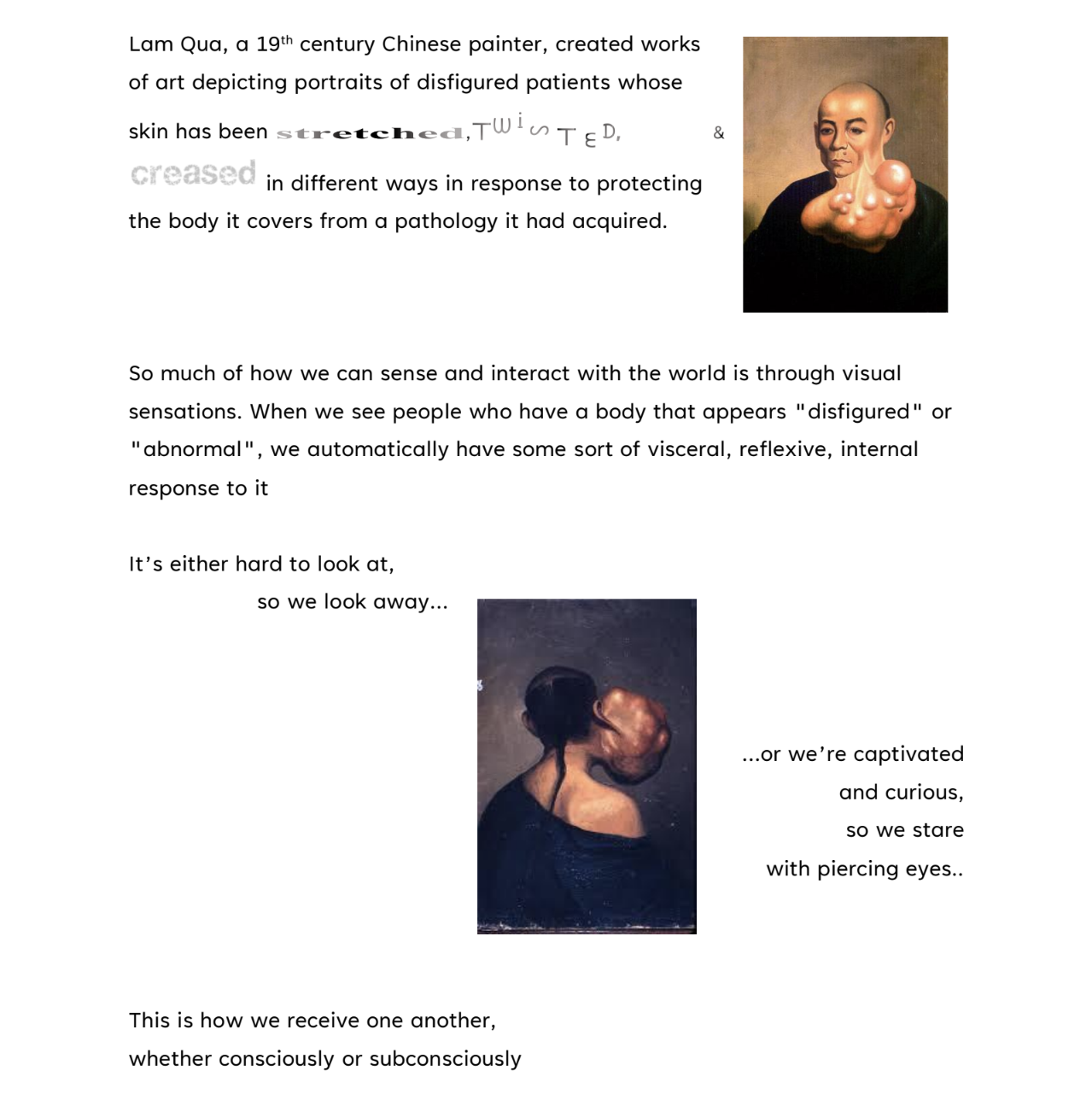
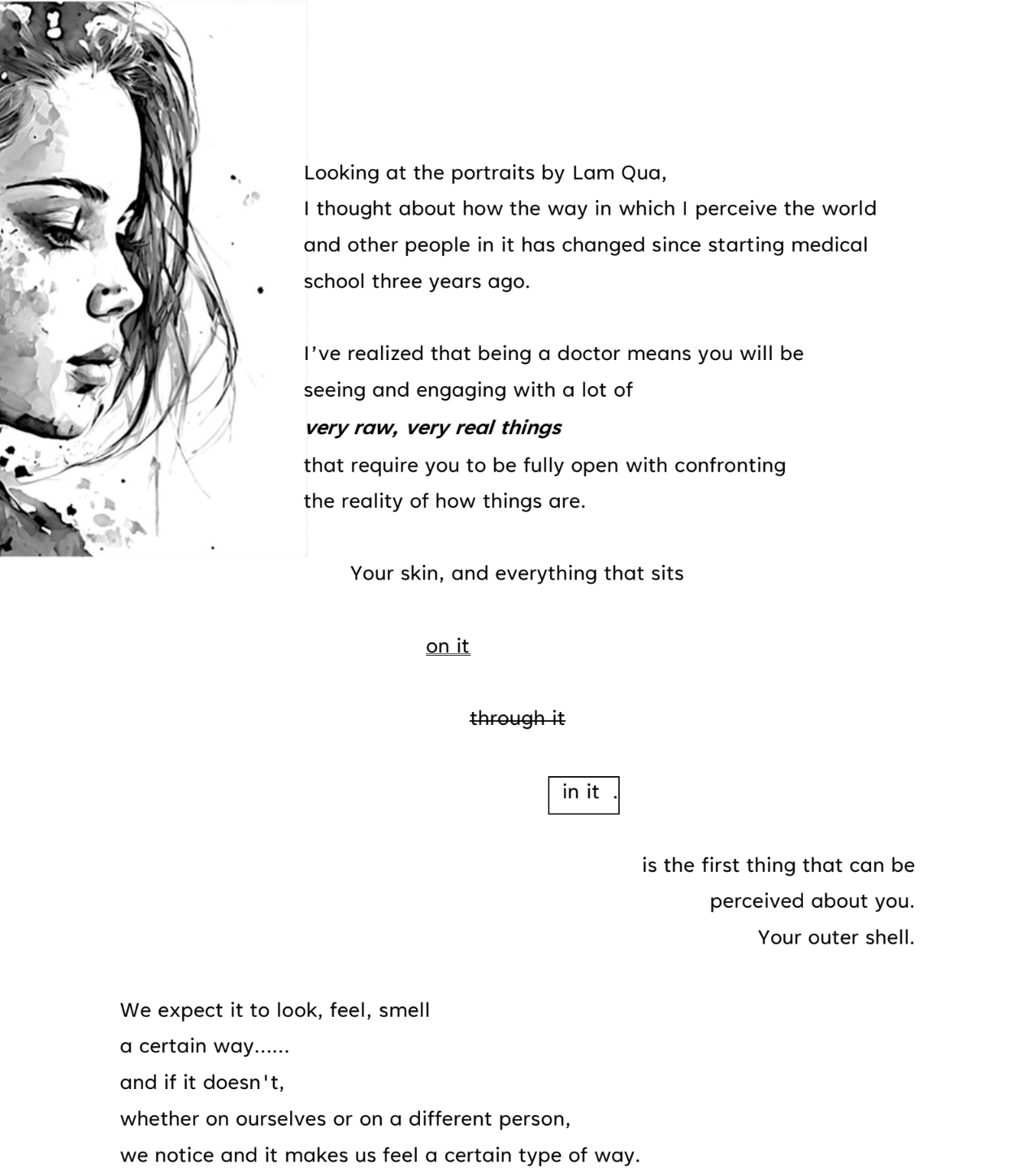
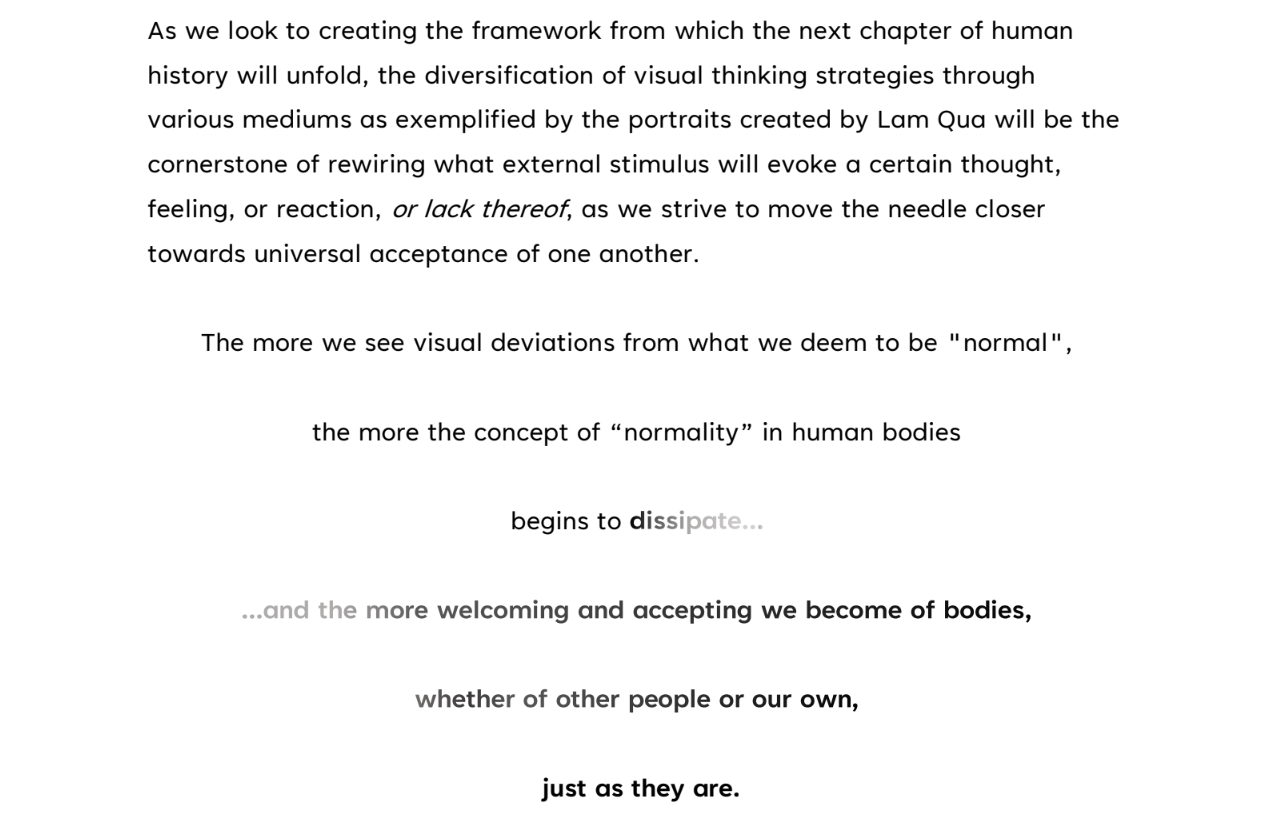
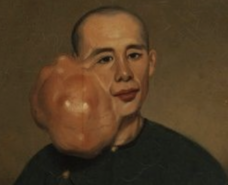
Images used by the artist include Portrait No. 40, Portrait No. 48, and Portrait No. 47 by Lam Qua. Images used courtesy of the Peter Parker Collection of the Whitney Medical Library at Yale University Library.
A Stitch in Hand
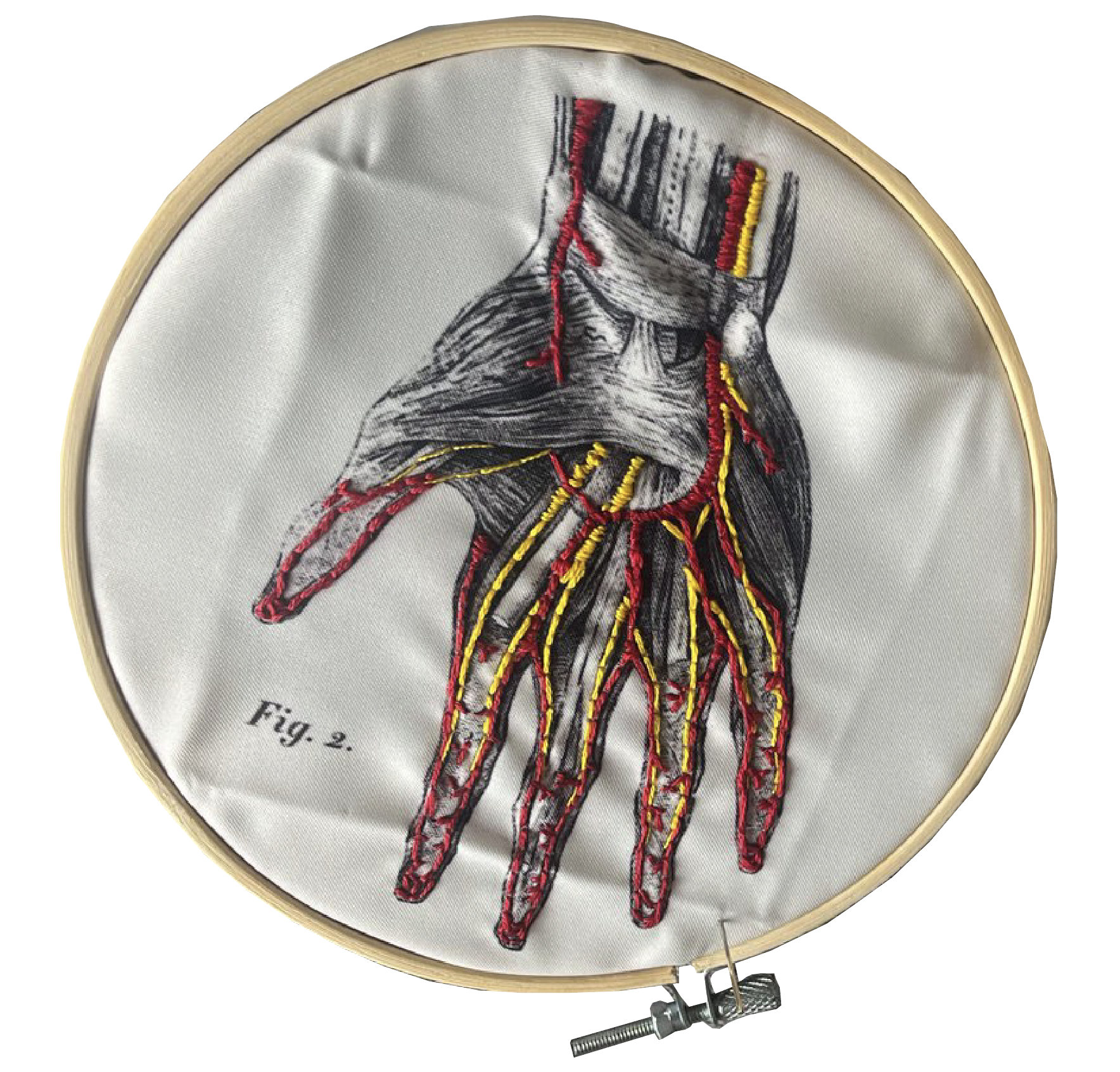
Embodied Grief
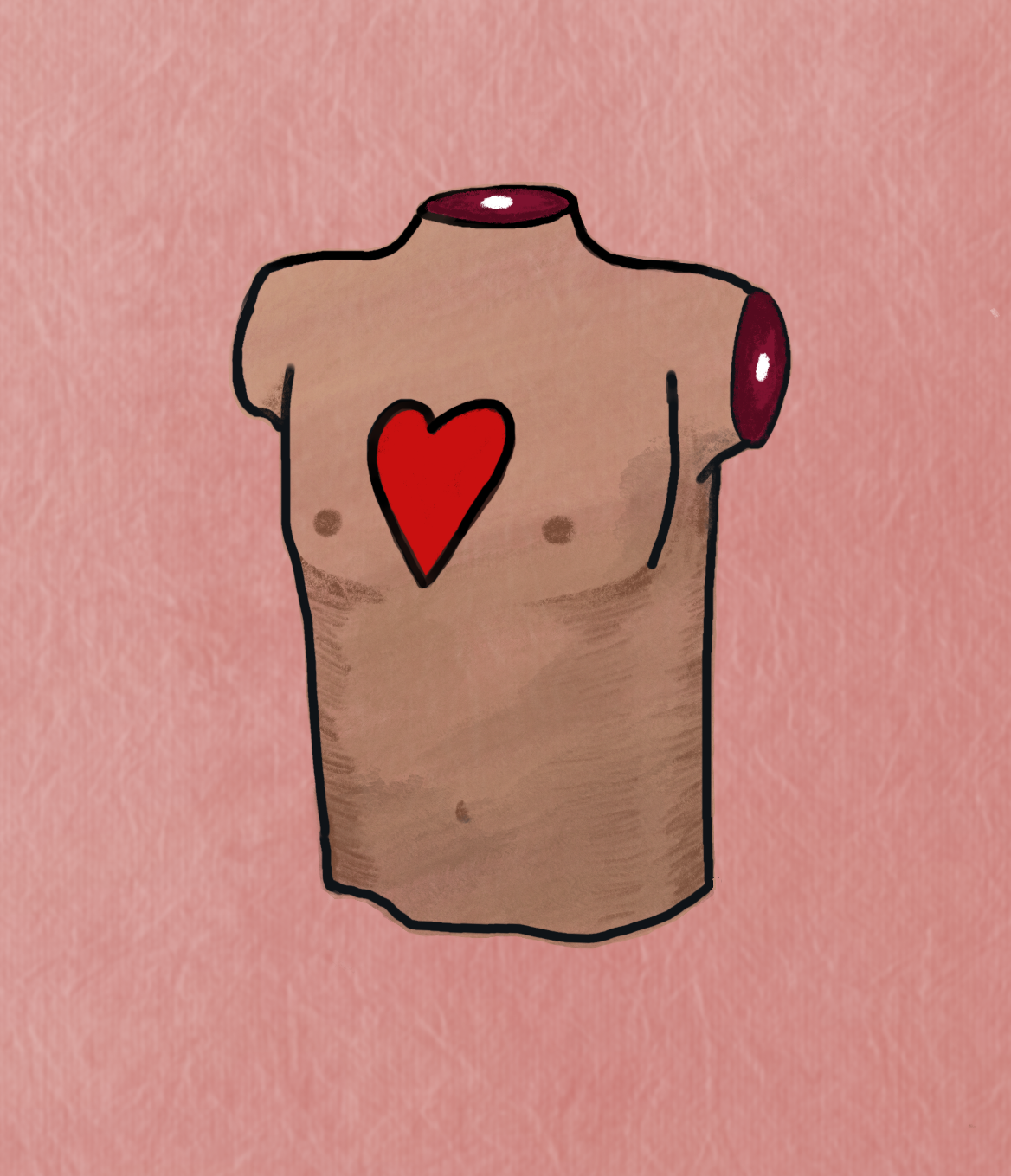
My Memory of You

In Terms Of

Stillness, Come Sit With Me
I wish in these hours of tendon, bone, salt
the erratic jump of machine’s tracing
with heart’s beat
Lub dub lub dub lub dub
I wish you could pour down the sulci
of my constant inside talk like summer rain
in the seconds before it all stops—
Leave me with the slow drip of one
last word from lilac bushes
faintly purple on the roadside
Teach me how to slow the beating
of not good enough and what if
and the more more more
Let me sit with you on the side of this lake
where the air tastes like fish
and water ripples with my toes
Watch the sailboats make their last circle
as the loons sing feathered wisdom
to the fading light
Shared History
I say, “What seems to be the problem?”
You say, “I don’t know. You called me in.”
I say, “Are you getting enough exercise?”
You say, “I’m too tired after a day on my feet. My muscles ache from
the up-down-up-down-up-down.”
I say, “Are you taking your fluoxetine as recommended?”
You say, “The little half-moons? I take a couple when I feel too down.
Regularly, just like you said.”
I say, “Do you have a support system for after the surgery?”
You say, “Yeah, my dog always helps me feel better. Don’t worry about
me, doc.”
I say, “You’ll need a radical orchiectomy.”
You say, “That’s fine, but can I keep my testicle?”
Family Medicine Rotation 8.27.22

Brachial Forest

Entangled

What’s in Your Hands?
What was in your hands when you arrived at the Emergency Department?
Your belongings that you wanted to make sure got to your hospital room
3 days later?
Your chest as we discover fluid around your heart
In the ICU?
Your husband’s wrist as your heart speeds up past normal levels
In pre-op?
Your neck as we go to surgery to take out the thyroid that got inflamed
from the medications to slow down your heart
On the floors?
Your Cincinnati Bengals Jersey, finally relieved to be out of the ICU and
watching football
A few nights later?
Your mouth, covering up a cough from the pneumonia that you caught in
the hospital
Another trip to the ICU
The next Bengals game?
The bed rail, as the wounds you’ve developed over the last month are
almost too painful to bear
Yet another week in the hospital?
My hand
It’s been a long month.
6AM/PM
What have we to show?
Walking home
Under the empty
Orange light of sodium street lamps
After even the stars have gone to bed
And the sidewalk slush soaks scrub hems.
Too tired to stuff speakers into our ears
As to avoid being left alone
With the siren-silence
And our thoughts.
Fresh footfalls indent the snow
Heading back the way we came.
Recall that those wet rubber soles squeaked
On the cold linoleum as if to punctuate
The pablum of our patient plan.
One of us has forgotten to wipe the blood
From the space between the treads.
Where is the purpose
We have lost in the place between
No particular morning or evening?
May we find it when again we meet
At the Intersection of Coming and Going
Of the lives that need ours most.
Til Death Did Us Part
There were no last breaths to take
You couldn’t
Just beats of your heart
I promised you wouldn’t be alone
I promised the kids
You weren’t
By your side I lay
You were at peace
No longer suffering
No hunger for air
Just you and I
As the saying goes
Love someone enough to set them free
You were free
Free as a bird
Freebird
Your favorite song
Our last cuddle
Til death did us part
Bayanihan
There’s a Filipino word:
bayanihan
(buy-uh-nee-hun)
which roughly translates to a spirit of helping your
community without expecting anything in return.
Bayanihan:
also the word used to describe the tradition of
neighbors coming together to move a family’s nipa
hut from one place to another.
In this way,
life is carried on the shoulders of the community.
A nipa hut, or bahay kubo, is a native Filipino house
made of wood, bamboo, and nipa grass.
In bayanihan, the bahay kubo is uprooted using
bamboo poles, hoisted onto the shoulders of 20 or
more people, and moved to a new location.
The bahay kubo being carried often also contains
the family’s belongings and even family members
incapable of making the trek.
The community moves as a single group, all vital
parts of the same journey.
All equally contributing to accomplish the goal.
Life is carried on the shoulders of the community.
I think of the practice of medicine as its own
bayanihan.
Consider the burdens, which the patient’s
shoulders alone cannot bear.
The burden of sickness, the burden of stress.
The burden of finances, the burden of emotion.
The burden of the future: not knowing, knowing too
much.
The burden of a life that did not unfold according to
plan.
These burdens that need a community’s shoulders
too.
Life is carried on the shoulders of the community.
We are the community.
Family members, loved ones, friends,
Physicians, nurses, pharmacists,
Practitioners, technicians, assistants,
Administrative teams, social workers, dieticians,
Volunteers, sanitation services, maintenance
engineers,
And countless others more who come together
because
life is carried on the shoulders of the community.
What is our role as physicians in this bayanihan?
We enter a patient’s life as one member of this
community.
Our work, our training, our struggles, our rewards
all giving us the strength to take a step forward,
difficult as it may be,
To take the patient’s bahay kubo one step further,
wherever that may lead.
Life is carried on the shoulders of the community.
We fall in line, we grip the bamboo pole, we make
the trek and shoulder the haul.
We don’t let the patient carry their bahay kubo all
on their own.
The bahay kubo that holds burdens.
The bahay kubo that holds a precious, shining, and
full life.
As my ancestors carried the lives of their neighbors
on their shoulders,
I, too, will carry the lives of my neighbors on my
shoulders.
What a privilege to be part of a bayanihan, where
life is carried on the shoulders of the community.
Salt Lake
The Elijahs who parted the waters with the rod are gone
And we remain
The chariot of fire and the whirlwind
The woven mantle and the staff with which to split the sea
Fall to us
The coal fire and the dam dynamo whirling in the spray
The white coat and the uranium control rod
But we are not prophets
We simply can see
And shout from the high places
That the machines we wrought were not miracles
That the land is barren and the rivers overrun their banks
No salt of the earth
Cast into the sea can make it clean
The cruse of oil has faltered and the measure of meal has failed
The bears are coming from the forest
The foam receding from the pebbled shore
Where stands not a host to safely cross
But a sprawl thirsting evermore
Pilfering the waters until the sickly light pierces the sediment
Where the Leviathan lies
Beneath the silt of the ancient lakebed
And roaring he ascends
Be he creature of many sinewed heads
Or clouds of Mercury, Arsenic, Lead
All the same
Those wefting limbs billow into the Valley
Piercing each palisade and cell wall
Coughing until lungs pall
And that will be all
Whether Abaddon beneath or a Hell all man’s own
You will no longer need us
A Place for Grief
It is September 19, 2022. I am one month into my first year of medical school, yet it feels like I’ve already crammed enough information in my brain to last a lifetime. Come graduation time, I will likely have lost clarity on much of the minutiae of my first year. I won’t recall how I awkwardly stumbled over my words as I practiced my first patient presentation, or how nervous I felt attaching a scalpel blade on the first day of anatomy lab. I certainly will need a refresher on the steps of the Krebs Cycle, and is cardiotoxicity a side effect of tamoxifen or trastuzumab?
However, I might remember the drive I took to class this morning. I was stopped in traffic at a red light near Primary Children’s Hospital when I heard an intense, familiar whirring sound that reverberated in my chest. I immediately turned my head to see the LifeFlight helicopter land on the roof of the pediatric Emergency Department. I felt that recognizable clench in my throat, adrenaline in my limbs, and tightness at the corners of my mouth that I always experience when I see that helicopter. Six months ago, I remember hearing that same hum of the LifeFlight’s propellers descend towards the hospital roof as I sat below in the ED social worker’s room. My shirt was stained with tears and my hands trembled. I held my siblings, William and Sarah, close. That flight was carrying our youngest brother, Henry. About half an hour prior, an Alta Ski Area police officer called to inform me that Henry had been in a serious ski accident and that I needed to get to Primary Children’s Hospital immediately. My parents were out of town, and I was needed as the responsible adult. I don’t have words to describe the pain I felt as the pediatric anesthesiologist explained that despite 90 minutes of intense resuscitation, Henry had died.
He was fourteen years old- a beautiful cellist, a talented tennis player, an adventurous mountain biker, and an exceptional student with a sweet-natured goodness about him that made him the glue of our family. Losing Henry is losing a piece of myself—my life, my identity as a sister, and my future as a medical student changed the moment he died. Sitting with Henry’s still-warm body in the trauma bay of Primary Children’s Emergency Department, I never wanted to enter a hospital again. I doubted that I would have the resilience and capacity to succeed in medical school under the weight of such immense grief.
I was in such bright spirits this morning before I saw LifeFlight land. I worked so hard to memorize the steps of muscle contraction and was feeling confident to be quizzed on it this afternoon in class. I’d done well on my assignments all week and was feeling invigorated and eager to tackle another day of learning. The instant I saw the helicopter descend, the resolve and strength that I’d enjoyed this morning immediately crumbled. I felt transported back to the social workroom, and I felt a flood of the same emotions I experienced when Henry died. I wondered if this patient’s family was also waiting with the social worker below, and I hoped more than anything that the child was okay.
I struggled to regain my composure before walking into class, flooded with self-doubt about my place in medicine. If every LifeFlight prompts such pain, can I ever be successful working in healthcare, responding effectively to trauma, emergency, and death?
It is February 20, 2023. I am now approaching the end of my first year of medical school. It has been a full year since Henry’s accident. I still feel the grief, a steady presence through each moment. Navigating tragedy in my own life has brought me in tune with the aches of those around me—classmates who have lost parents, mentors who have lost children, and neighbors who have lost loved ones. I have come to understand grief as a friend—a lifeline that fosters connection to the humanity of another person. From grief sprouts a greater empathy, compassion, and sensitivity. It connects me to Henry, too. I have felt this pain and I can now see it in others. Grief is pervasive in medicine. Loss is intrinsically intertwined with the effort to heal.
I keep a photo of Henry tucked into the back of my student ID badge—the last school photo he took. I see a bit of him in every patient I meet. I miss him profoundly. Glancing down at my lanyard throughout the day, it serves as a reminder not to harden myself against the heaviness of loss, but rather use it to fuel my sincere commitment to providing healing, connection, and comfort for those in my care. This is the place of grief in medicine.
Heavy
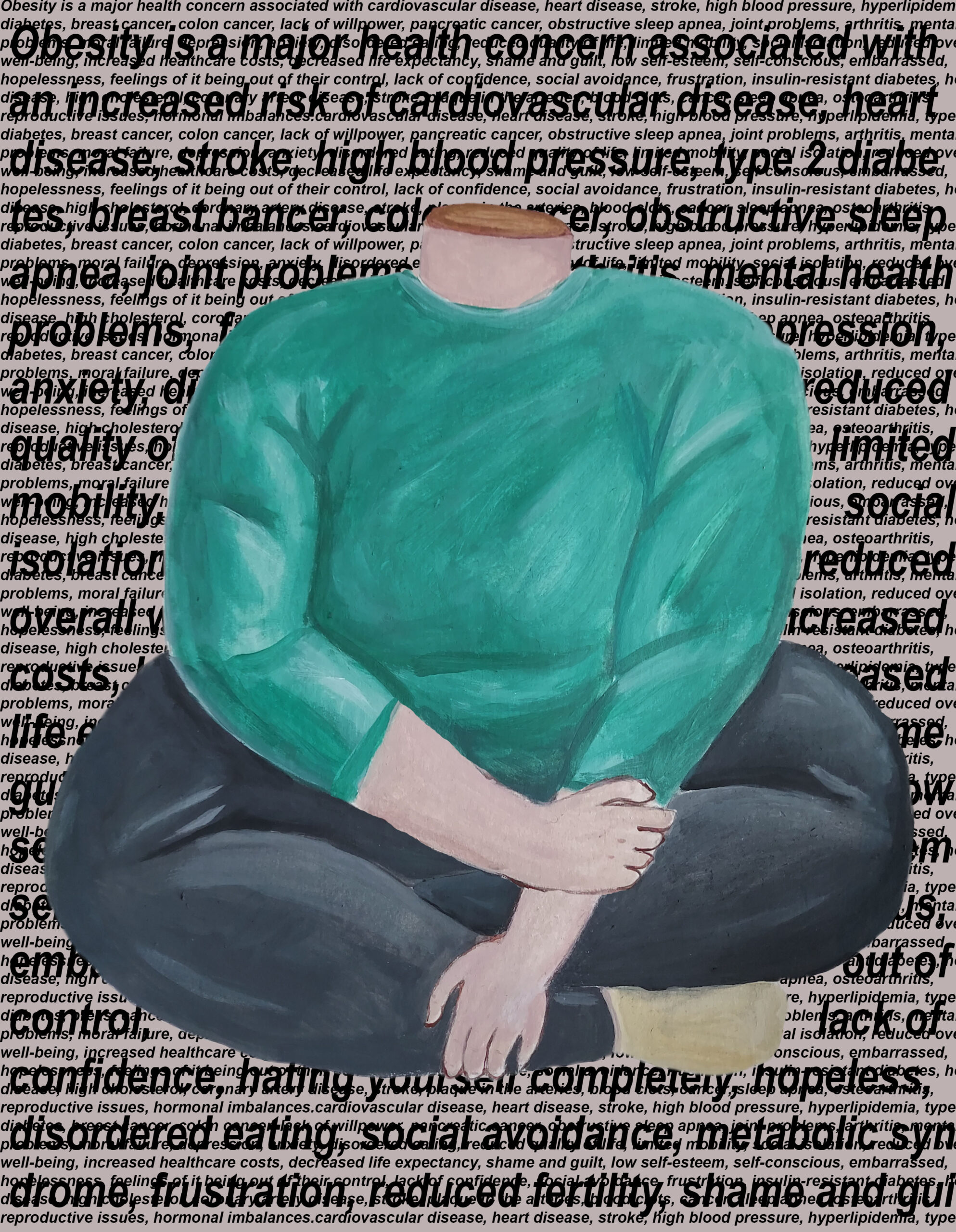
My Name is Not “Patient in Rm#”
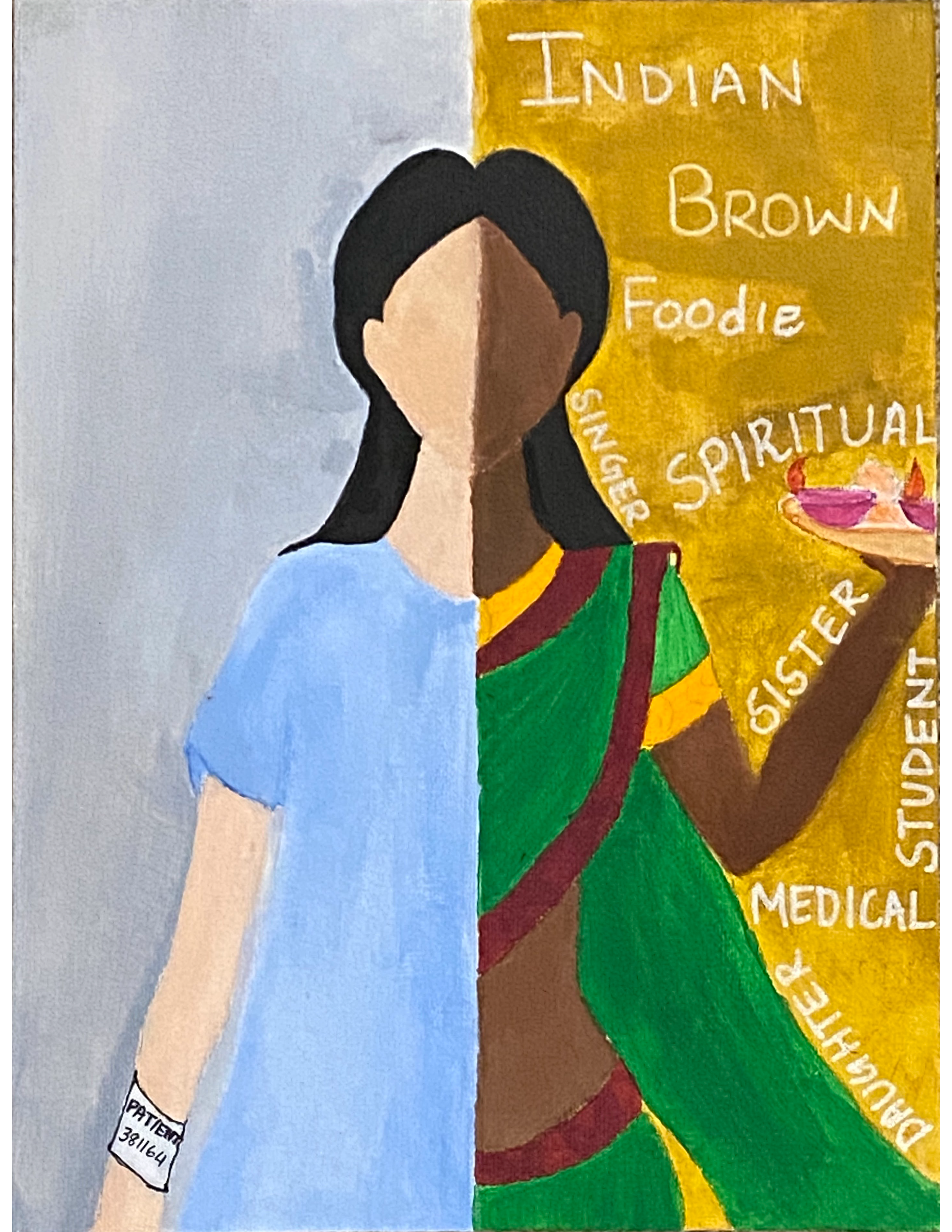
Stage Four
She is stage four.
Knowing this will take her life,
Someday.
Her daughter knows too, but no one else can see the tiny cluster of cells on her liver; in her brain.
When they hear she has cancer they think it must be early because she still has her hair.
They don’t realize it’s a wig.
She just wants to see her children graduate high school,
But there’s always another milestone, always something she’ll miss.
Knowing she’ll be okay but what about everyone else she’ll leave behind?
How does she tell her kids she is dying of cancer?
She wants to show her daughter where to spread her ashes in the mountains, but she’s been feeling short of breath recently and her latest scans showed something new.
A met in her lung.
Her friends notice she’s stopped going to weekly support group meetings.
The unfortunate sisterhood; living through it together, fighting.
But, also dying.
They go to her celebration of life, but that makes it all more real.
The sisterhood continues; the rest continue living, however long they have left.
A new member walks in.
She is stage four.
Crabby
Sometimes the Shape of Grief is a Stethoscope
There is a certain bittersweetness in the place
That marks my journey to physicianship.
The place where my mind blossoms
And my heart will always ache.
It is here, in the hospital,
Where I am both the eager learner
And the bereaved family member.
The bright-eyed student,
The twin-less twin.
As I walk down the ever-teeming corridors
I see doctors bustling
And families mourning;
Myself, I find in both.
The wonders and woes of medicine
Irrevocably interwoven into the fabric of my white coat.
I see the place
Where I said goodbye to you.
My heart races
And swells,
Beats and lulls.
The symphony of sorrow
Plays on
Sometimes the shape of grief is the stethoscope
That hangs around my neck.
Familiar, so achingly familiar.
The magnitude of its weight
Only perceptible to me.
They tell us not to forget what makes us human.
That practicing medicine can make us cold.
But how could I ever brush past the sorrows of my patients
When I will never go a day without reconciling my own?
In the place that knows such profound sorrow
And such profound joy
Let grief be my greatest teacher.
In lieu of sending flowers,
Let me nurture my patients to bloom.
Malar
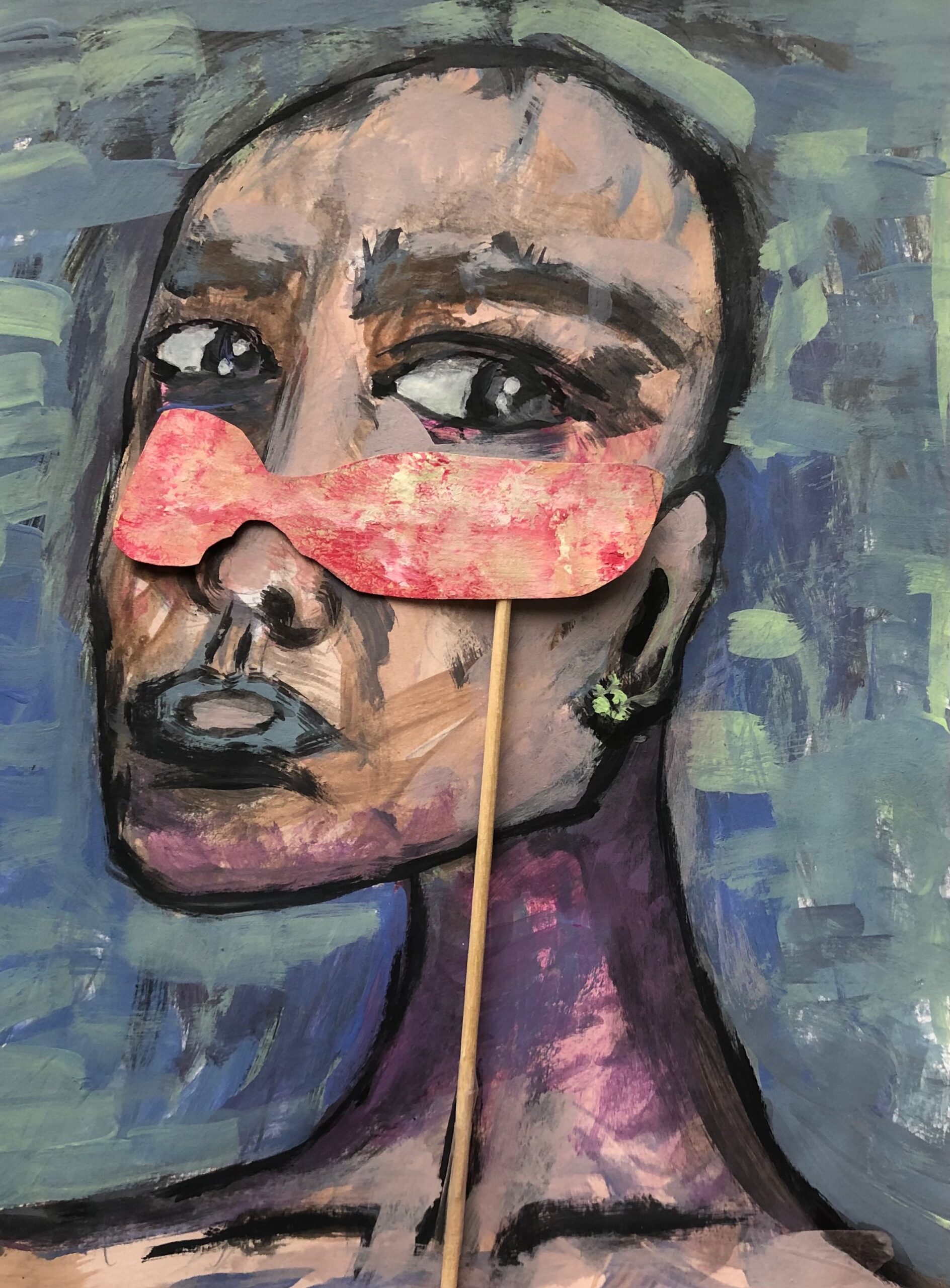
after wards
Rooms where there is living and dying
Giving and drying
Eyes, diagnoses either millstones or balloons
On frail necks.
In these touchstone rooms we make our house,
And forsake our spouse
At home, that home. Our promises are full of “soons”,
Our ears, “Next?”
In their beds our guests slumber evades
Cacoph’ny in spades
Sings them restless. We feel helpless, like diving loons.
We are specks.
If I could heal, I’d make us holy.
Ask Death, “More slowly,
Give us more time. More moments for larks’ lofty tunes.”
He objects.
What is Love?
Is it a gentle kiss?
Is it a whispered promise?
Is it a summer day’s bliss?
Is it relinquishing your freedom to be with them?
I saw it there, in a memory care unit
He was the only person she knew
He still understood time, place, and her heart
But couldn’t bear to part from her, and got admitted too
In sickness and in health, for better or for worse
70 years together, not a day apart
When death did call, together they traversed


